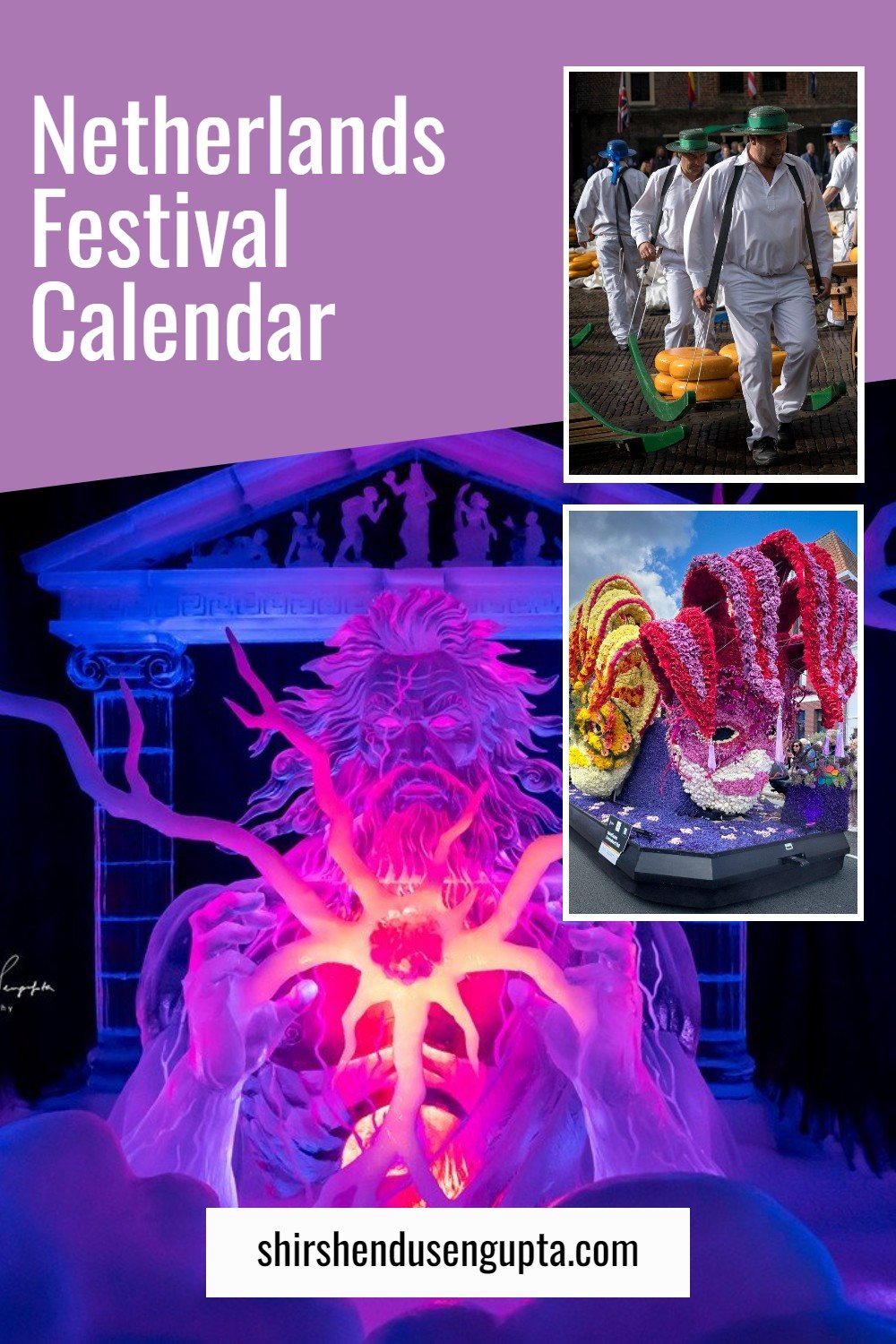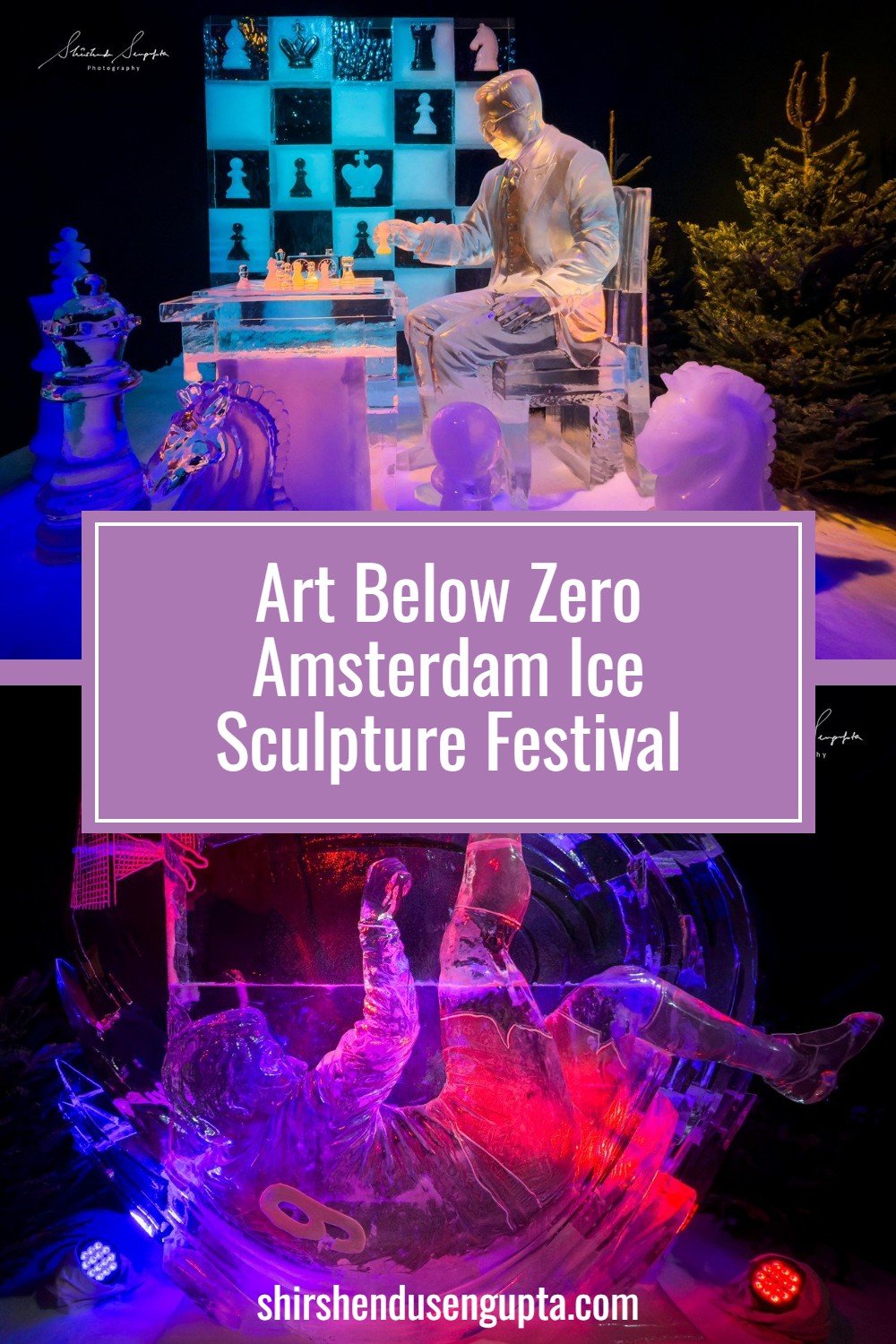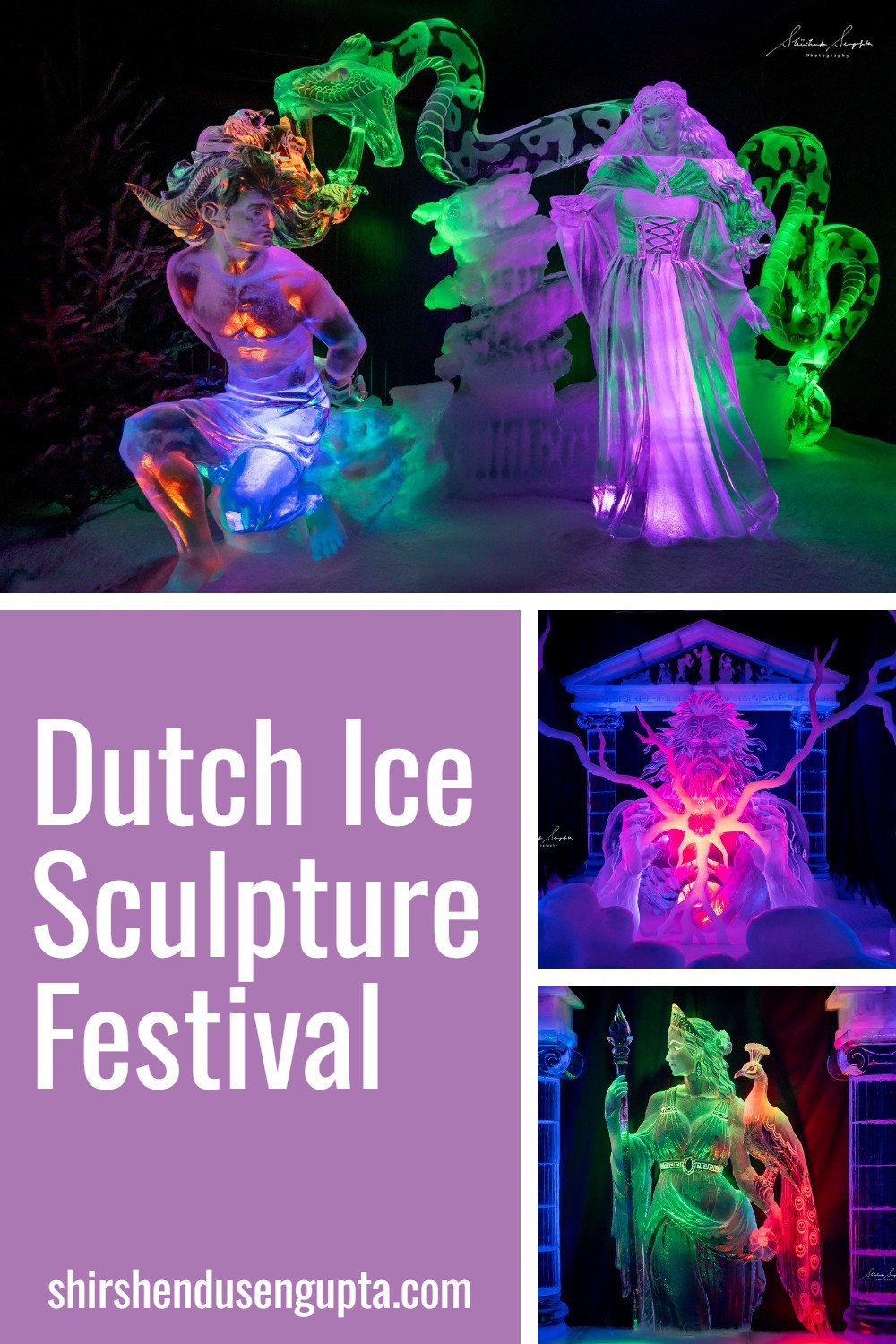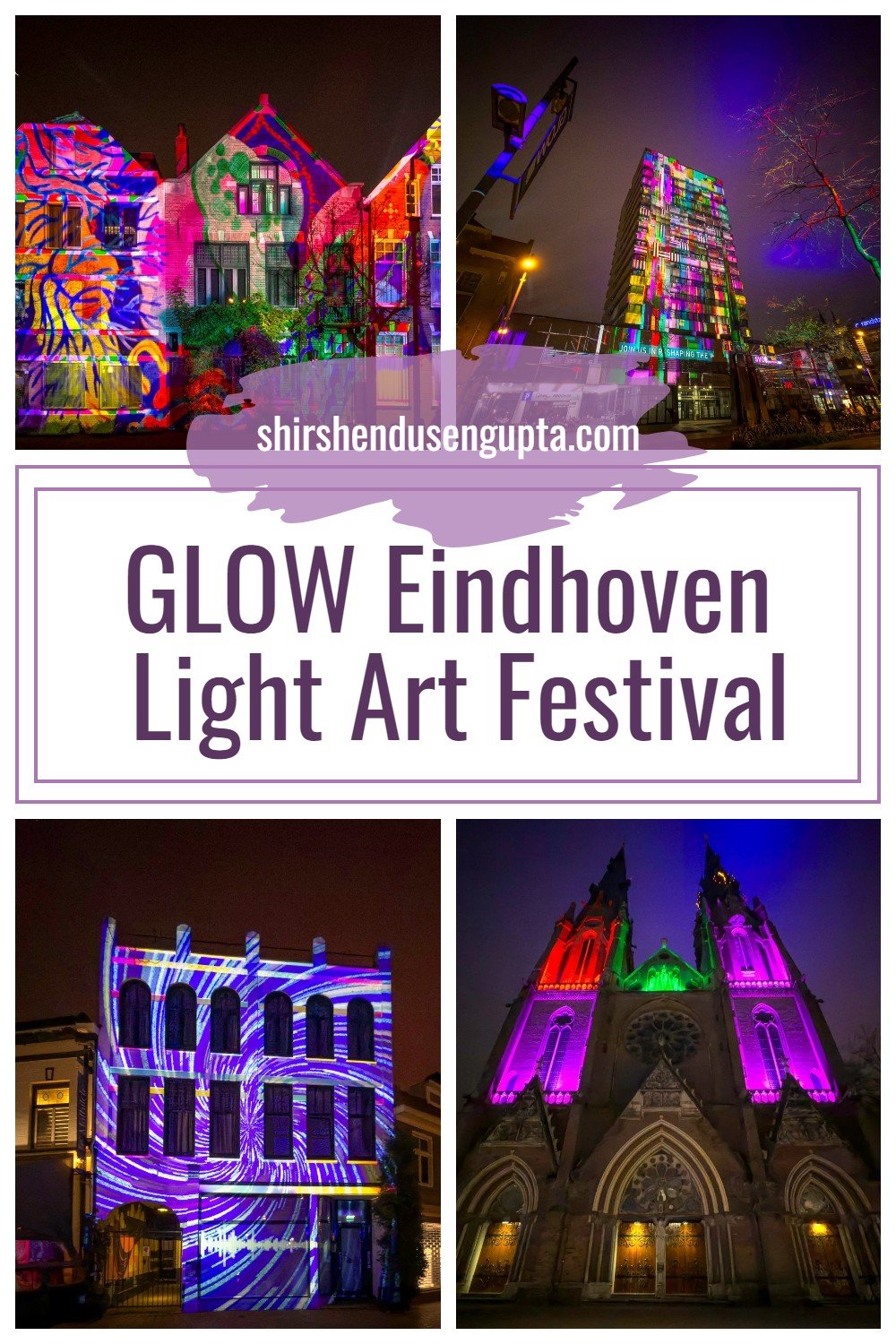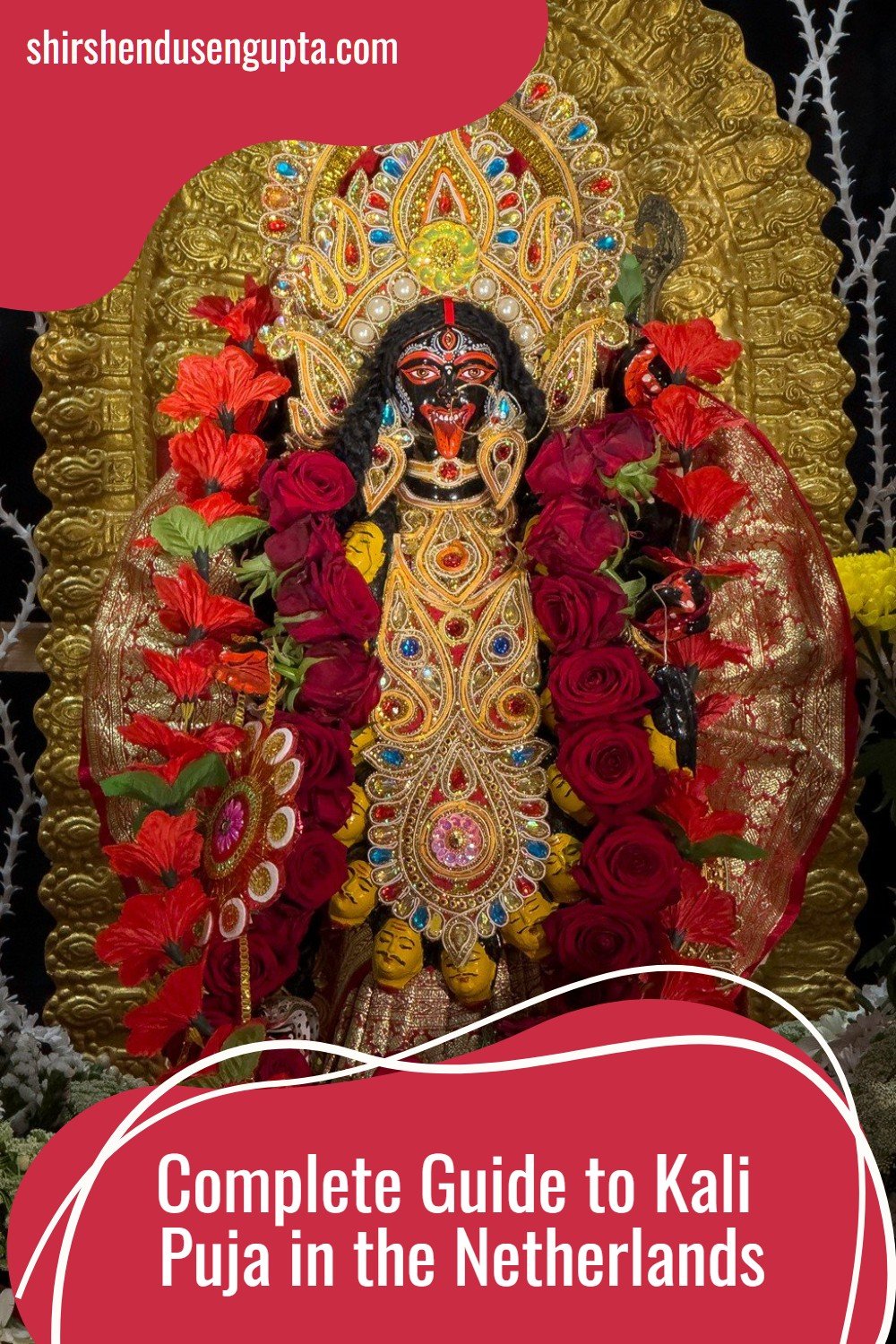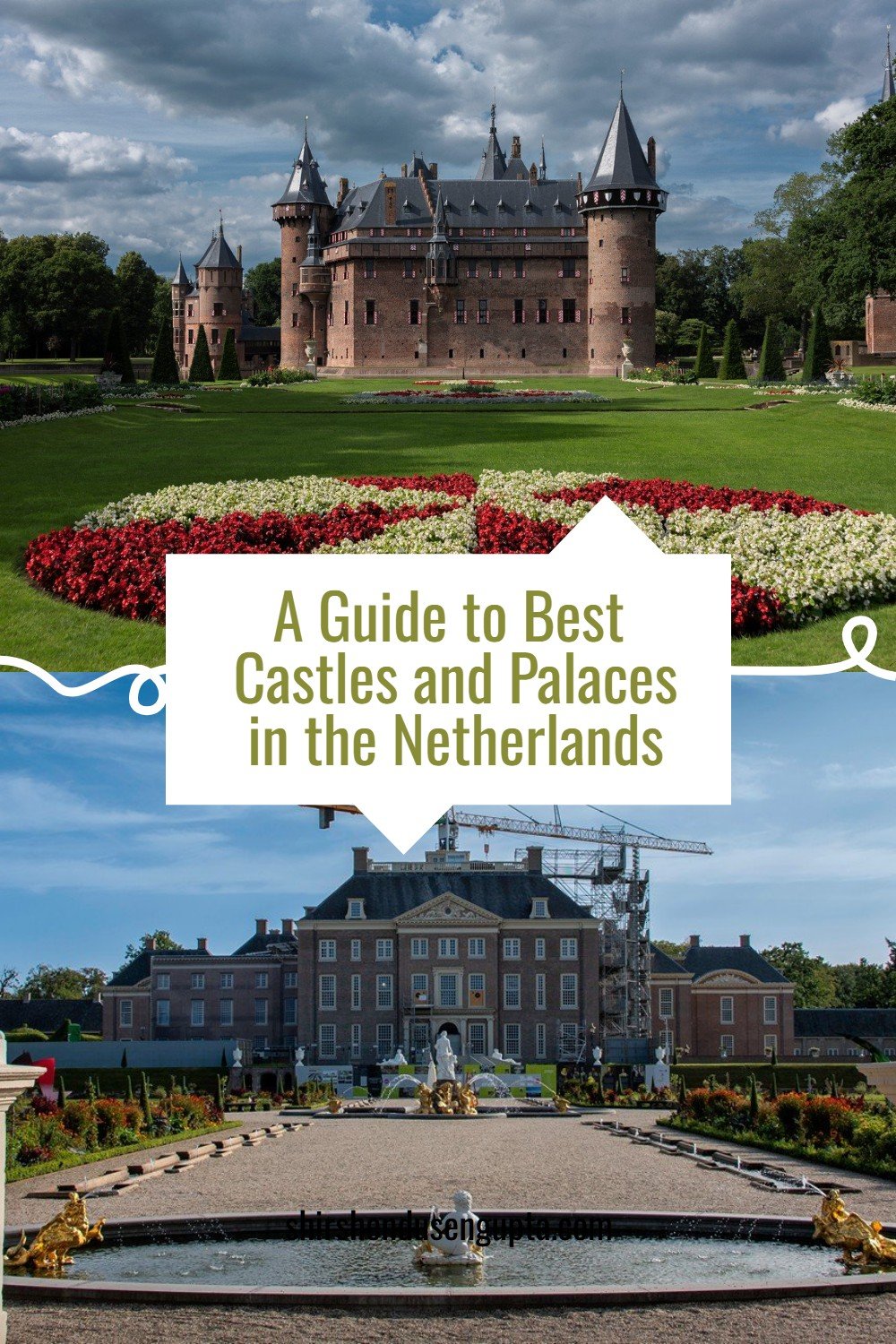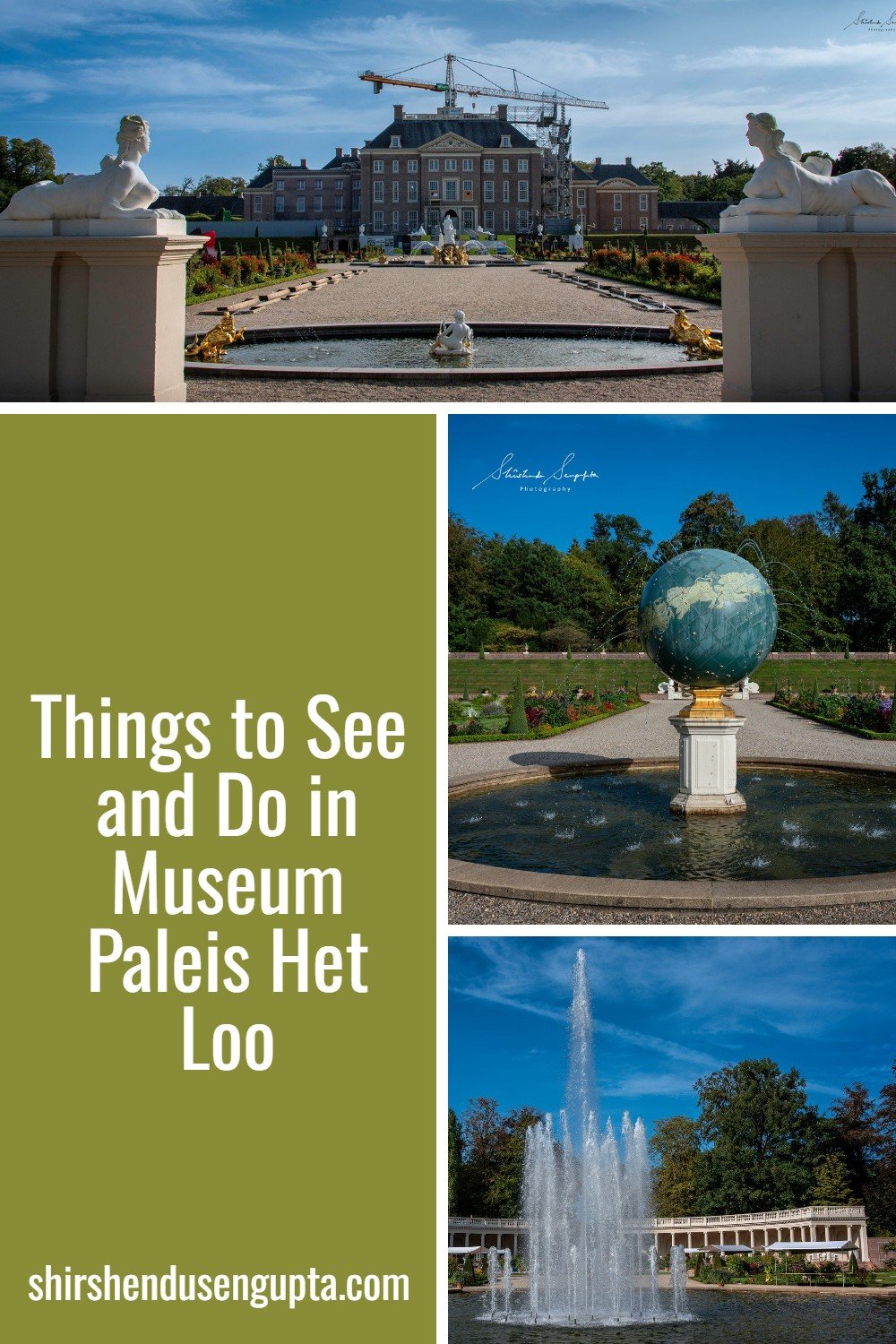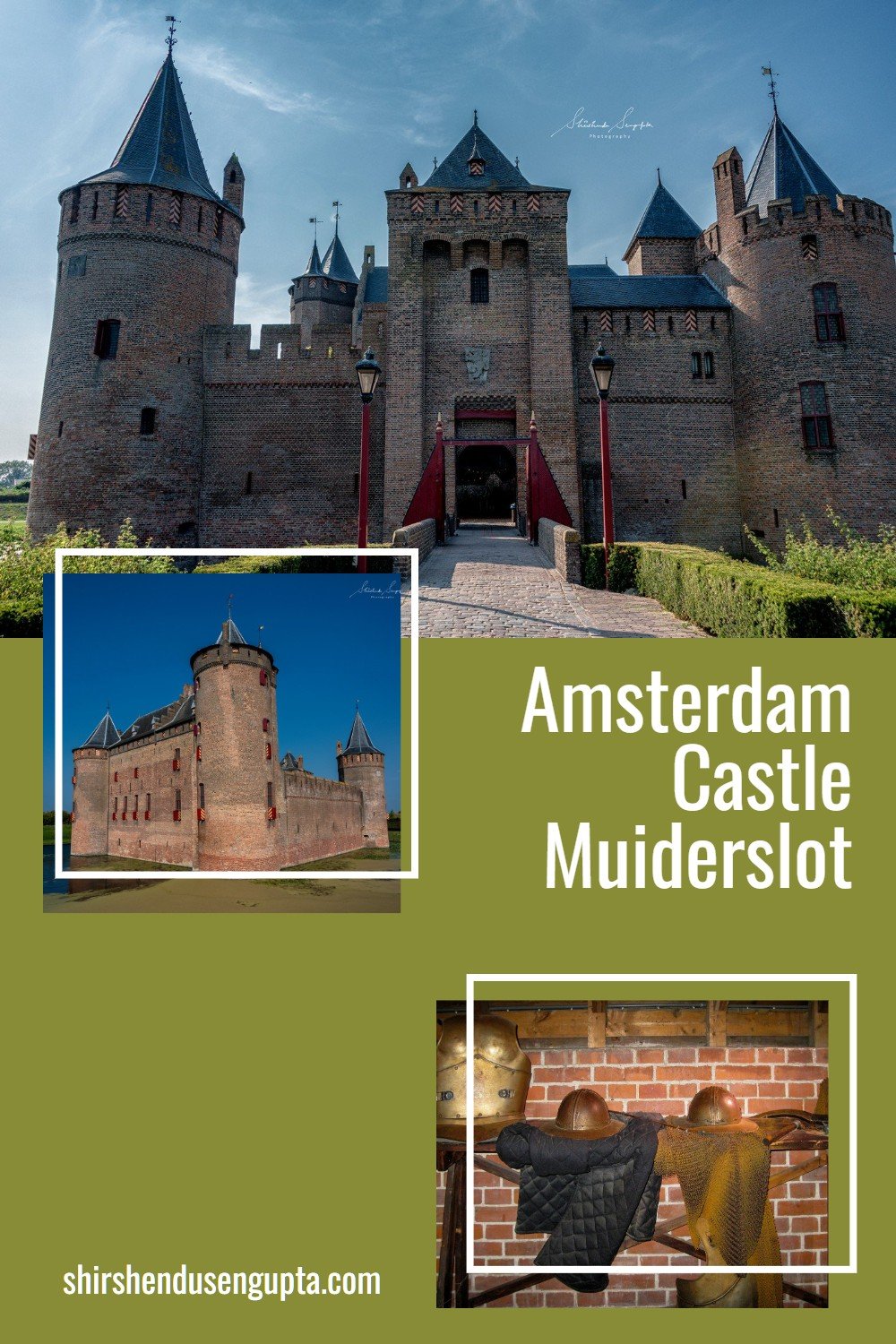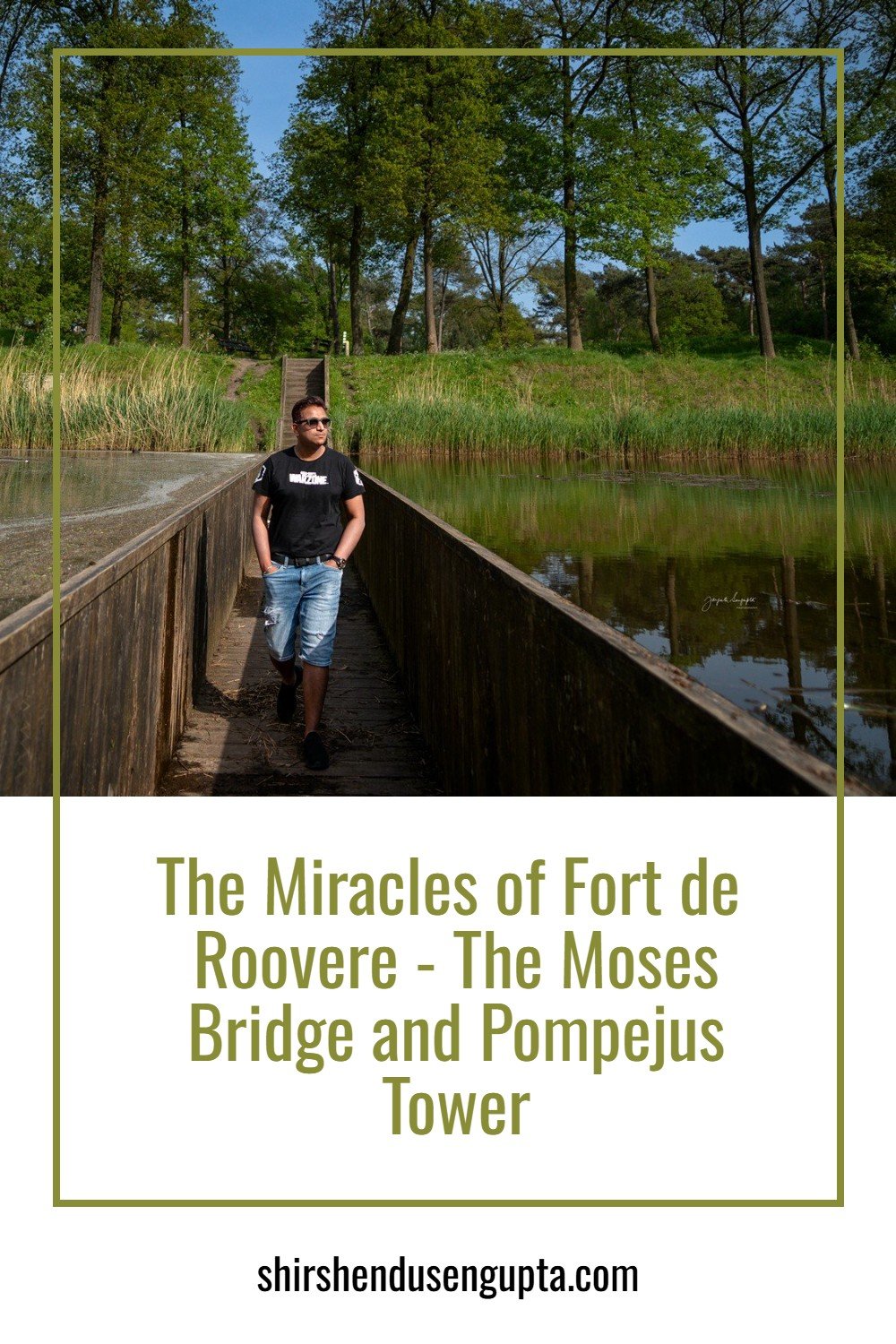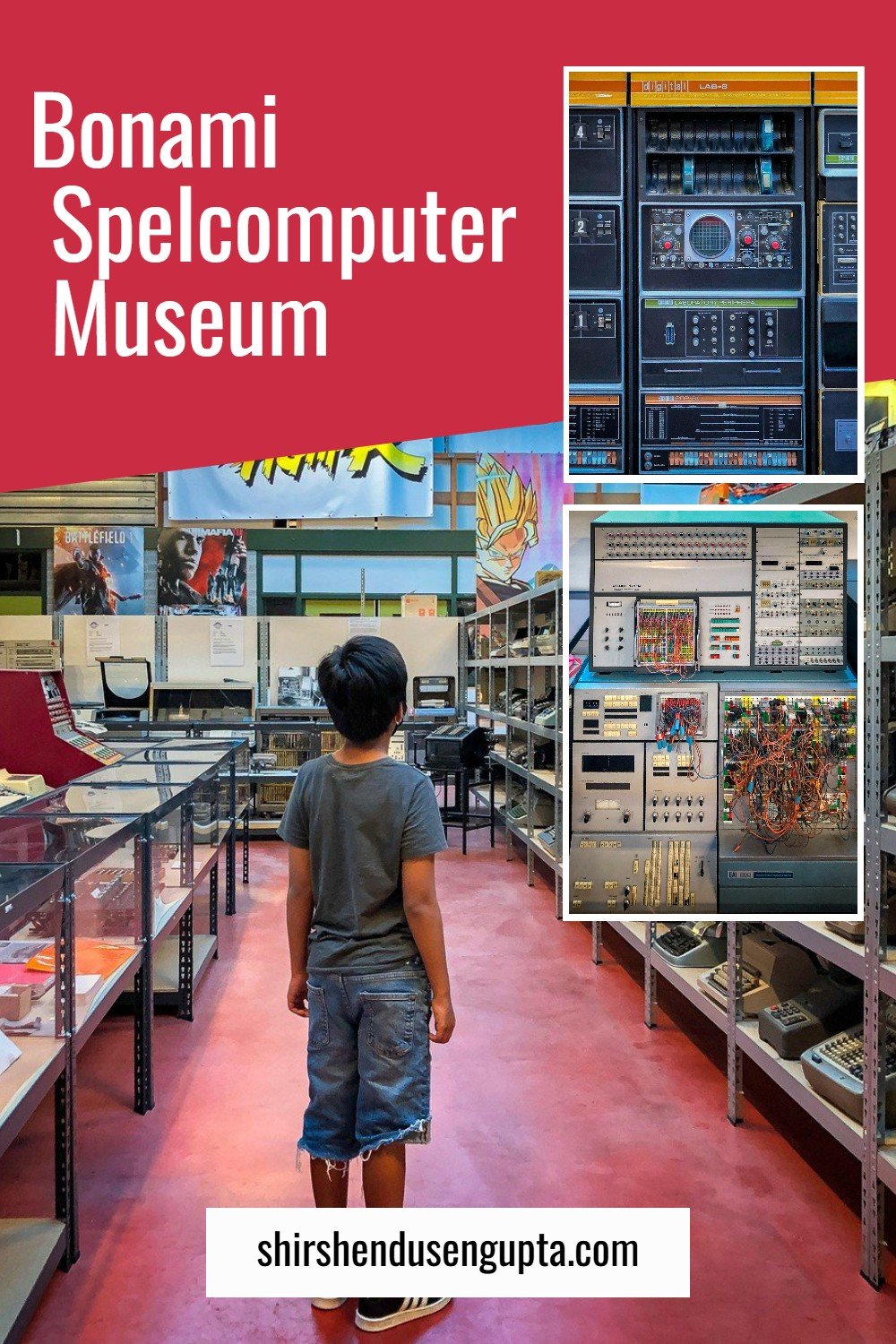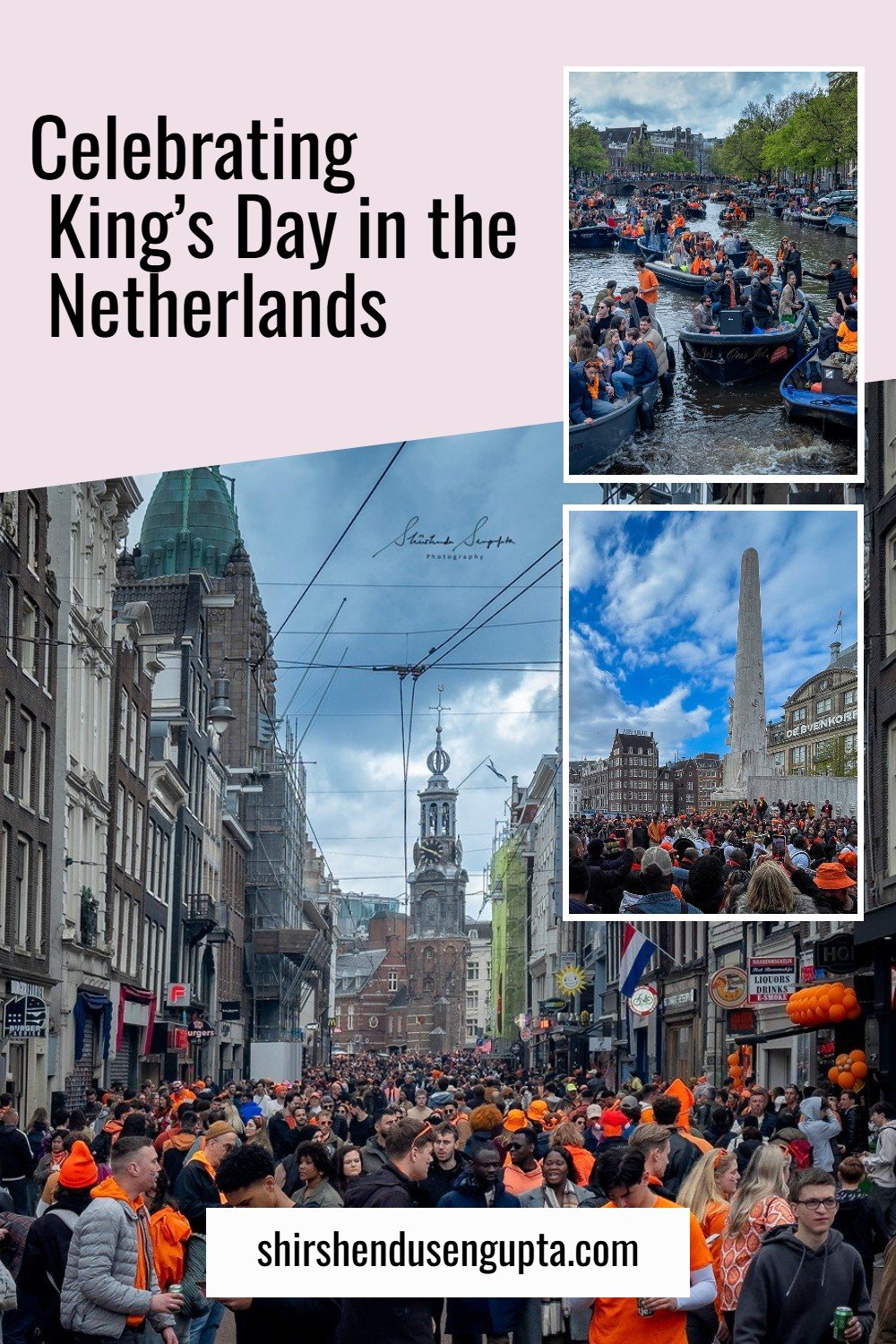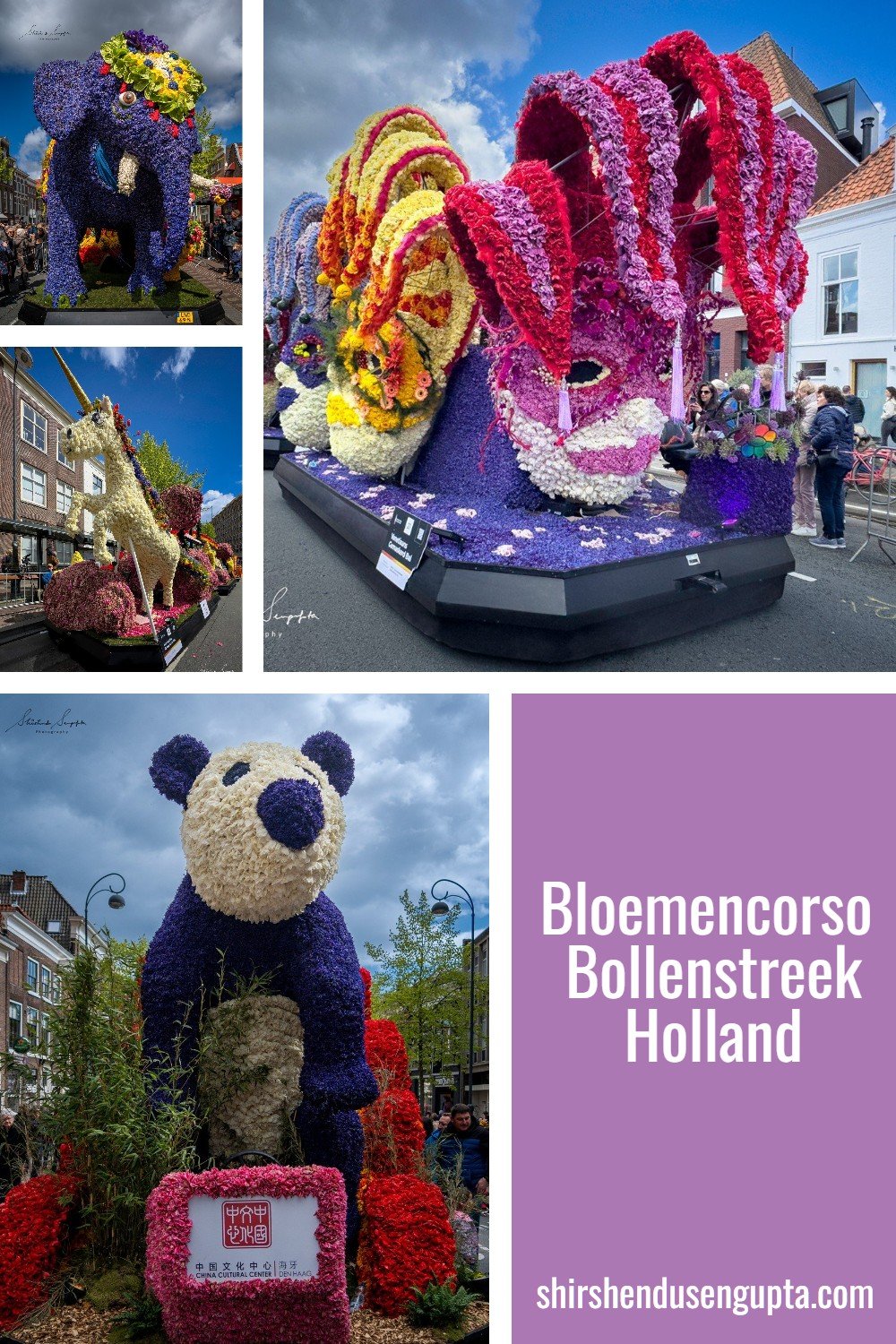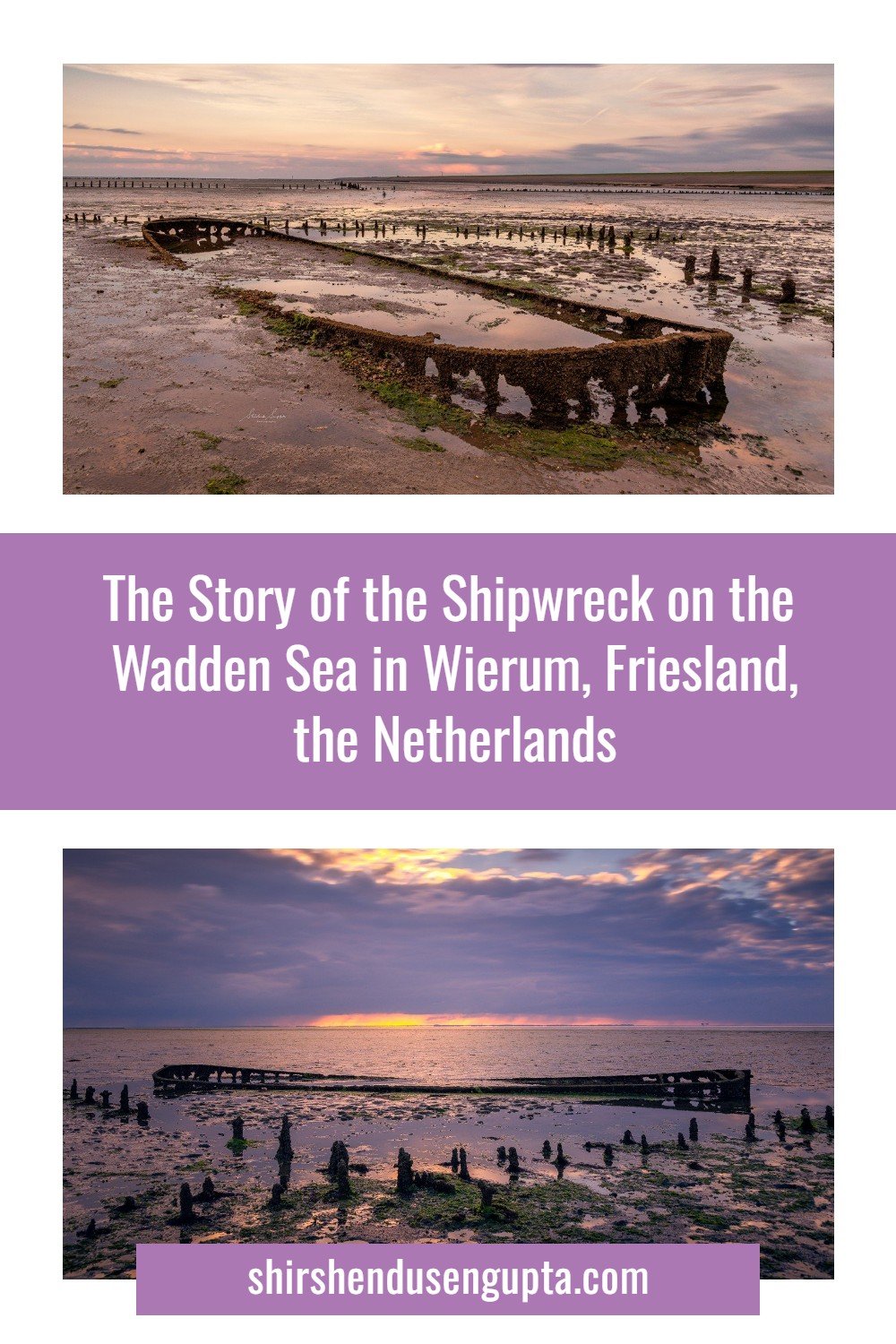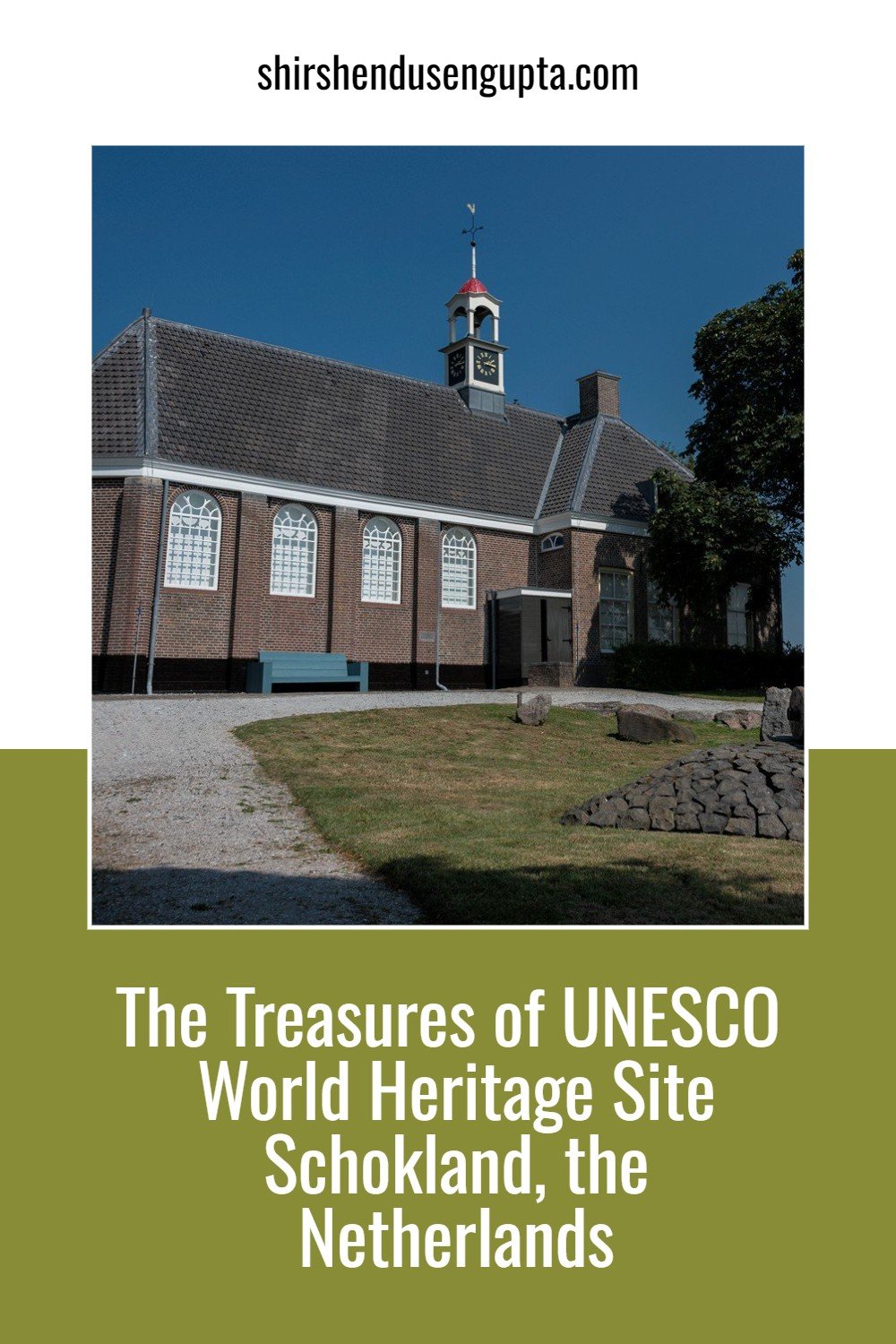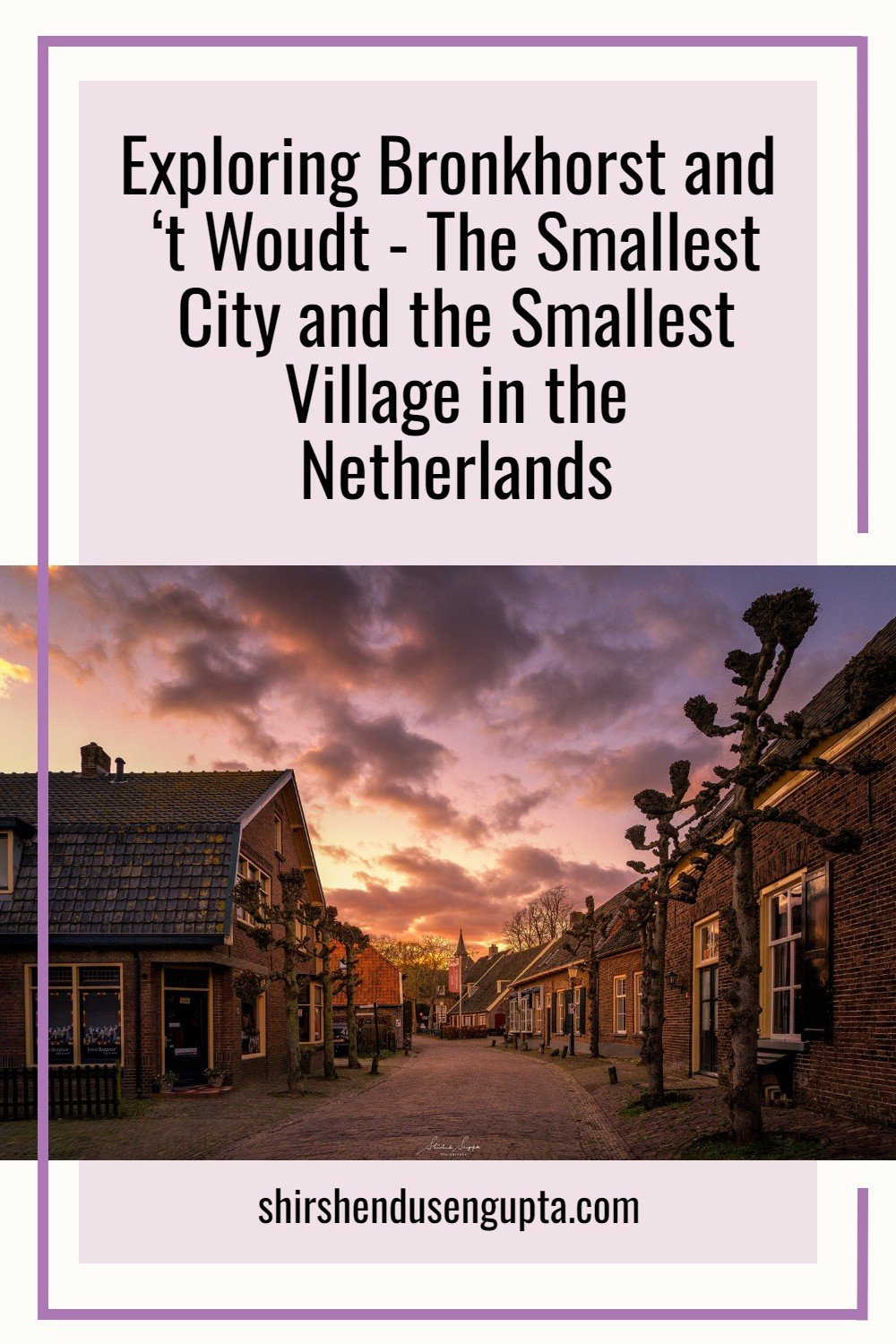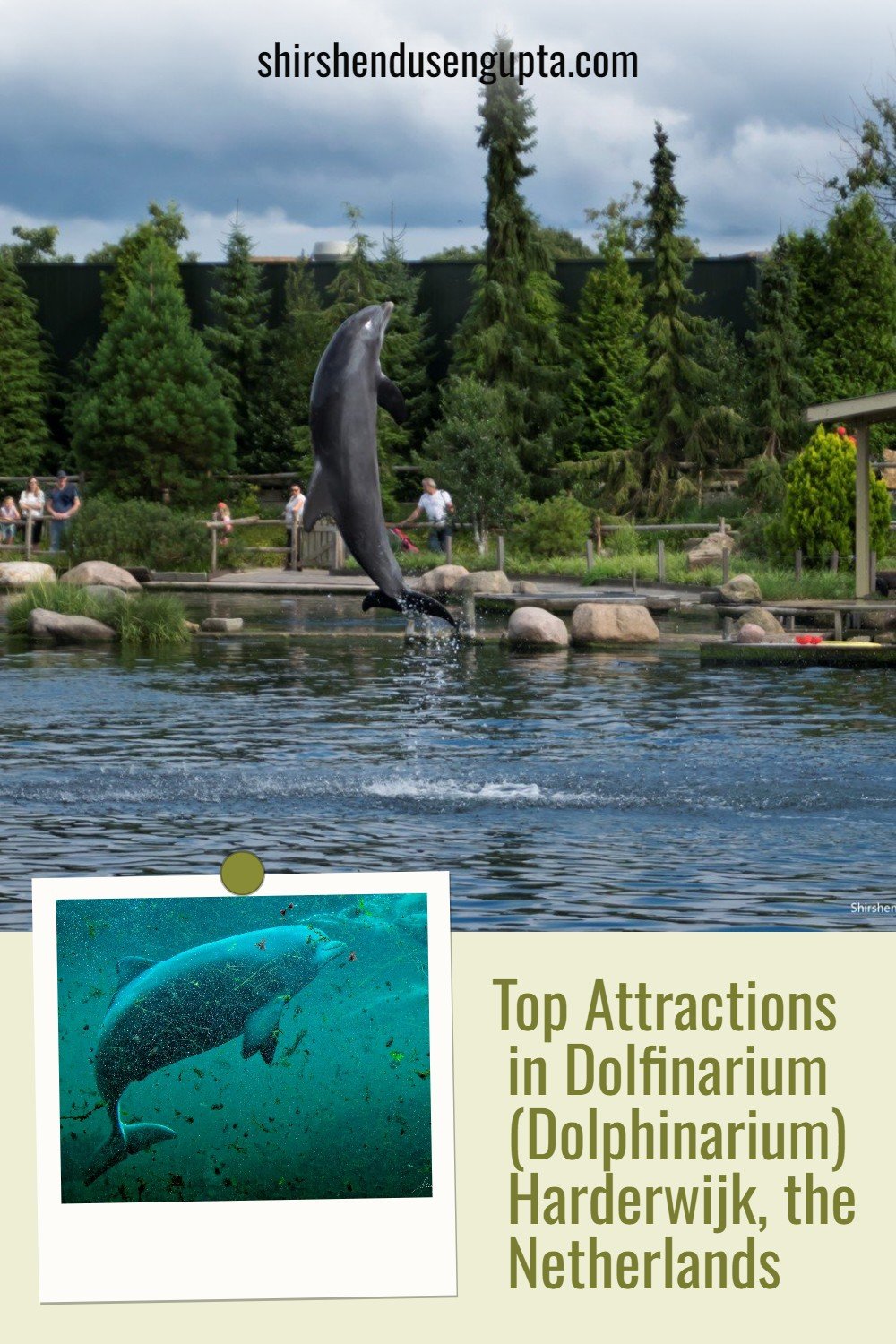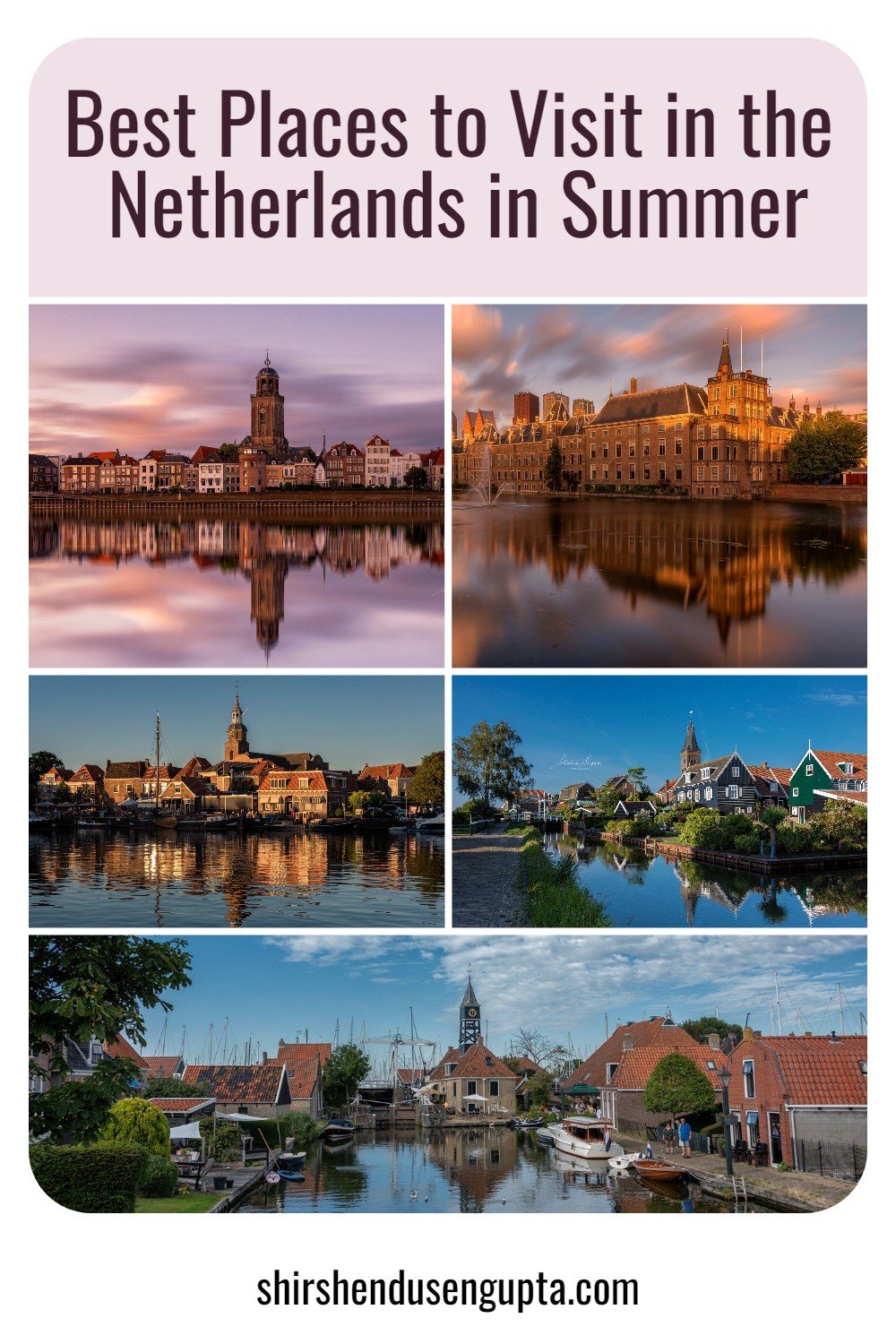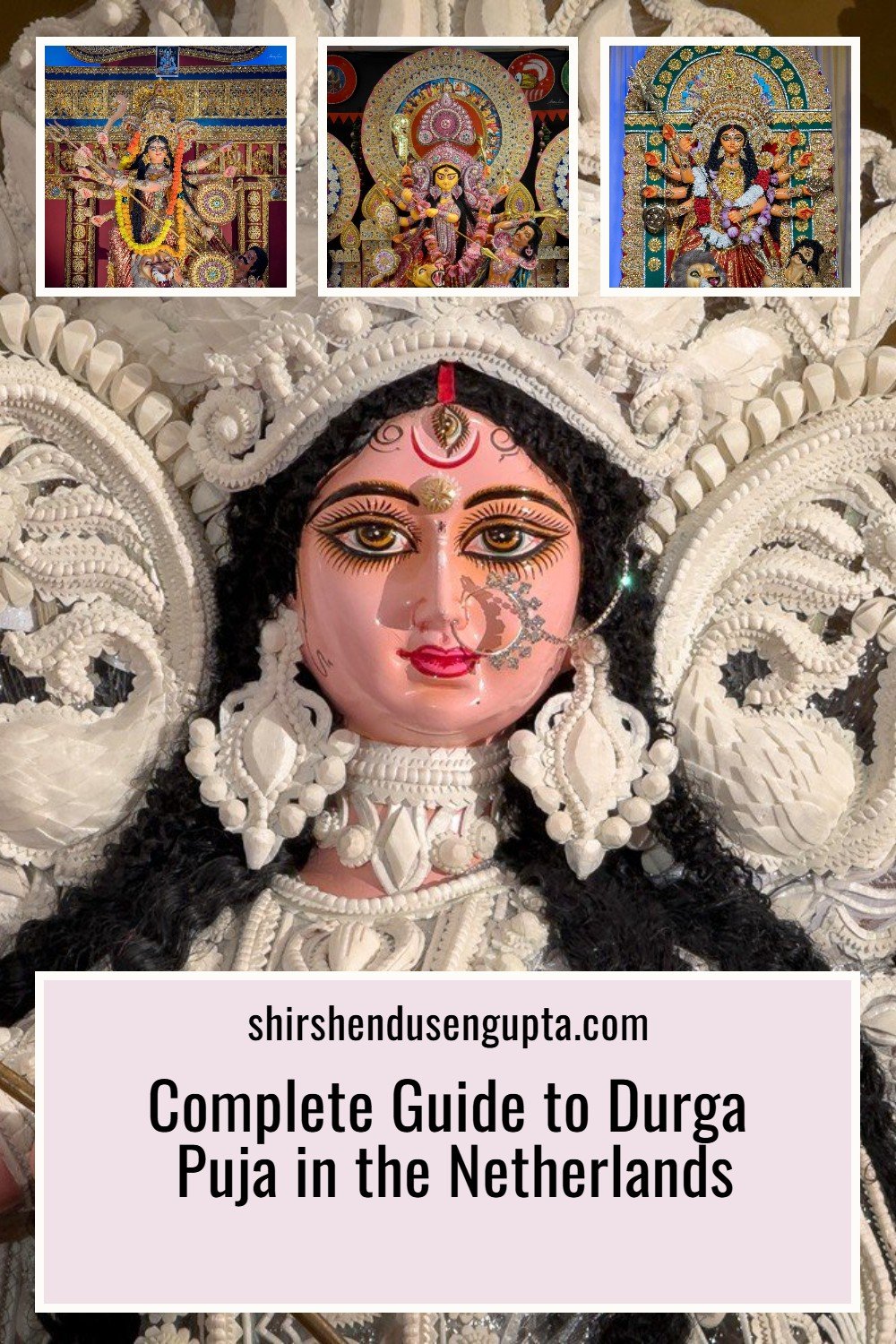25 Instagrammable Hotspots in The Hague | 25 Best Photography Spots in The Hague | Top 25 Photo Spots in Den Haag, the Netherlands
Welcome to The Hague (Den Haag in Dutch)
The Hague, or Den Haag in Dutch, is the Netherlands’ seat of government and a city where regal charm meets modern sophistication. Located on the North Sea coast, The Hague isn't the capital, yet it is home to the Dutch Parliament, the Supreme Court, and the International Court of Justice. Its roots trace back to the 13th century when the Binnenhof (the current Dutch parliament complex) was constructed as a hunting lodge by Count Floris IV of Holland. The city evolved into a political powerhouse over the centuries and remains one of the most influential cities in Europe. Strolling through The Hague, you'll encounter elegant boulevards, regal palaces, modern skyscrapers, charming squares, and art museums packed with Dutch Masters. It's a city of contrasts where history, governance, royalty, and contemporary life blend harmoniously.
For photographers, The Hague is a treasure trove of visuals; from moody canals and Gothic buildings to beachside sunsets and cosmopolitan street scenes. This article will take you on a visual journey through the most Instagrammable spots across the city, including both its old-world elegance and contemporary edge. Whether you’re a street photographer, architecture lover, or casual Instagrammer, The Hague has the perfect shot waiting for you at every turn!
25 Instagrammable Hotspots in The Hague
1. Binnenhof (Dutch Parliament)
The Binnenhof is not just a political nucleus of the Netherlands, it’s also one of the most photogenic historical sites in Europe. This 13th-century castle complex, built originally as a hunting lodge for Floris IV, became the seat of Dutch politics in the 15th century. Today, it houses the States General, the Prime Minister's office (known as the Torentje), and the Ministry of General Affairs. Its Gothic towers, tranquil courtyards, and reflective waters of the Hofvijver make it a photography haven. Early morning offers golden-hour shots of the complex mirrored in the still pond, while evening lights provide a dramatic backdrop. The Ridderzaal (Knight’s Hall) with its twin towers is especially iconic. This area’s unique combination of water, architecture, and national significance makes it irresistible to camera lenses. Walk the perimeter or photograph it from the Mauritshuis museum side for a classic wide-angle frame. During political events or King’s Day celebrations, the area becomes lively with Dutch flags and festivities, offering dynamic candid moments. A visit to The Hague is incomplete without snapping the Binnenhof from every possible angle. It’s the essence of the city’s regal and administrative identity.
If you want to know more about the best castles and palaces in the Netherlands and how to visit them, please read our article A Guide to 9 Best Castles and Palaces in the Netherlands | Top 9 Most Beautiful Castles and Palaces in the Netherlands to Visit.
2. Noordeinde Palace
Noordeinde Palace is one of the three official palaces of the Dutch royal family and a centerpiece of regal elegance in The Hague’s city center. Originally built as a medieval farmhouse in the 16th century, it was transformed into a royal residence in 1640 and has since served various roles, from royal workplace to ceremonial venue. Today, it functions primarily as the working palace of King Willem-Alexander, making it the administrative heart of the Dutch monarchy. Architecturally, the palace exudes understated sophistication. Its neoclassical façade, with symmetrical windows, a dignified entrance, and a formal courtyard, offers a refined backdrop for architectural and portrait photography. The palace gates, adorned with the royal coat of arms, are especially photogenic when paired with the uniformed royal guards who occasionally stand at attention, ideal for storytelling street shots.
The surrounding Noordeinde Street is lined with high-end boutiques, art galleries, and charming cafés, creating a stylish yet relaxed royal atmosphere. Visit during the national flag display days or royal birthdays to capture the palace decked out in vibrant ceremonial colors. Though the interior is not open to the public, the exterior and surrounding area make Noordeinde Palace a must-visit Instagrammable location rich in elegance and history.
If you want to know more about the best castles and palaces in the Netherlands and how to visit them, please read our article A Guide to 9 Best Castles and Palaces in the Netherlands | Top 9 Most Beautiful Castles and Palaces in the Netherlands to Visit.
3. Mauritshuis
The Mauritshuis is not only home to Vermeer’s “Girl with a Pearl Earring” but also a striking example of 17th-century Dutch architecture. Built between 1636 and 1641 for Count Johan Maurits of Nassau, this museum sits gracefully by the Hofvijver lake, right beside the Binnenhof. Its façade, with classicist symmetry and large arched windows, reflects beautifully in the water, creating a mirror effect that photographers adore. Early morning light or dusk twilight are perfect times to capture its golden limestone glow. The museum’s interiors, with opulent chandeliers and baroque detailing, are also photographable (without flash), especially if you're a fan of indoor mood shots. Outside, the cobbled square allows for wide frames, often with cyclists and stylish locals adding life to the composition. From across the lake, you can capture both the Mauritshuis and Binnenhof in a single panoramic frame, merging art, politics, and history in one click. During special exhibits, artistic installations often adorn the façade, offering unique creative opportunities. The Mauritshuis is more than a museum; it’s a living frame that celebrates art in every direction you turn your lens.
4. Vredespaleis or Peace Palace (International Court of Justice)
The Peace Palace (Vredespaleis) is The Hague’s most iconic symbol of international justice and diplomacy. Commissioned in the early 20th century and completed in 1913, the building was funded by steel magnate Andrew Carnegie and designed by French architect Louis M. Cordonnier. Housing the International Court of Justice and the Permanent Court of Arbitration, it stands as a beacon of global peace efforts. Architecturally, it’s a neo-Renaissance marvel with turrets, arches, and a red-brick grandeur that demands photographic attention. The landscaped gardens surrounding it offer tranquil foregrounds, especially during tulip season. From the front gate, the grand entrance, flanked by intricate ironwork, makes for a majestic wide-angle shot. The Palace looks especially atmospheric at dusk when warm lights illuminate its stone detailing. In front lies the World Peace Flame, often surrounded by candles and dedications, ideal for close-up symbolic photography. While interior access is limited, the exterior provides endless angles and moods throughout the day. The Peace Palace is not just a place; it’s a message, and photographing it allows you to capture a little piece of that hope for humanity.
If you want to know more about the best castles and palaces in the Netherlands and how to visit them, please read our article A Guide to 9 Best Castles and Palaces in the Netherlands | Top 9 Most Beautiful Castles and Palaces in the Netherlands to Visit.
5. Nieuw Kerk (New Church)
Nieuwe Kerk, or “New Church,” may be named so, but its roots stretch back to the 17th century, having been constructed between 1649 and 1656. Located on Spui, it was originally a Protestant church designed in Dutch Baroque style by architect Peter Noorwits. Today, it serves as an event space and concert hall, but its historical character remains intact, making it a fantastic photography location. The church's tall octagonal tower rises dramatically above its surroundings, ideal for vertical compositions. Its cream-colored stonework and arched windows contrast beautifully with the urban textures of the modern city around it. Step inside (when open) to capture vaulted ceilings, wooden pews, and decorative flourishes that harken to its sacred past. Outside, during golden hour, the sun casts soft shadows across the building’s surface, highlighting its architectural reliefs. Street musicians or art markets are sometimes set up nearby, adding layers of life to your frames. The adjacent plaza allows wide-angle shots that incorporate both the church and urban bustle, providing an interesting juxtaposition. Nieuwe Kerk is perfect for storytelling photography, a sacred structure that now plays a secular role, captured in light and shadow.
6. Plein
Plein is one of The Hague’s liveliest squares and a magnet for photographers seeking candid energy, architectural beauty, and royal heritage in one shot. Originally a vegetable garden for the Binnenhof in the 16th century, Plein evolved into a grand square modeled after Parisian plazas. Today, it’s lined with neoclassical façades, stylish cafés, and elegant government buildings. At its heart stands the statue of William the Silent, founder of the Dutch Republic, offering a central anchor for wide shots or focal points. By day, the square buzzes with civil servants, locals, and tourists, creating perfect conditions for street photography. By evening, ambient lights and café terraces transform it into a warm, cinematic scene. During holidays and political events, the square is adorned with flags, market stalls, or protestors, each offering unique visual stories. Autumn leaves blanket the cobbles in warm colors, while winter brings soft, frosty textures. The reflections of lit buildings on wet pavements after rain are especially atmospheric. Whether you're after symmetrical building shots, human interest portraits, or abstract plays of light, Plein is a vibrant and dynamic photo spot at any hour.
7. Plaats
Plaats is one of the most charming and historically rich squares in The Hague, nestled between the famous Plein and the bustling Hofweg, just steps away from the Binnenhof. Its name literally means “Place,” and it has served as a central gathering point since medieval times. Today, Plaats combines elegant architecture, cozy cafés, and boutique shops with a deep historical resonance. One of its most significant features is the statue of Johan de Witt, the 17th-century Dutch statesman who was infamously murdered here in 1672, a dramatic event that changed the course of Dutch history. The square is bordered by beautiful 18th- and 19th-century buildings with ornate facades that offer the perfect backdrop for street photography. Plaats is an ideal spot to pause and soak in the atmosphere. During the day, you’ll find locals enjoying coffee on sunny terraces, shoppers browsing the nearby streets, and photographers capturing the elegant row of buildings framed by leafy trees. At night, the area glows under soft street lighting, creating a warm and romantic setting. Whether you're interested in Dutch history, lifestyle photography, or simply want to relax in one of the city’s most beautiful squares, Plaats offers a perfect blend of past and present.
8. Grote Markt
Grote Markt is the beating heart of The Hague’s nightlife and one of its most vibrant public squares, beloved by both locals and photographers. Originally a medieval market square, it has transitioned into a hub of pubs, terraces, live music, and street art. The surrounding buildings are quaint and colorful, offering rich textures of brickwork, windowpanes, and vintage signage. At night, fairy lights and neon signs transform the square into a glowing, cinematic frame perfect for low-light or bokeh photography. Daytime brings golden sunlight cascading between café umbrellas, making it a great setting for lifestyle and food photography. From high-angle shots from nearby windows to low-angle crowd scenes during a concert or event, Grote Markt is a flexible canvas. During weekends and holidays, it hosts festivals and open-air performances, adding a rhythmic energy to your frames. Musicians and street performers often become compelling subjects for portraits. The blend of old architecture, social energy, and dynamic lighting makes Grote Markt a quintessential urban photo spot; one where moments, moods, and memories can be visually bottled in a single click.
9. Grote Kerk
The Grote of Sint Jacobskerk, also known simply as the Great Church of The Hague, is one of the city’s most iconic and historic landmarks, offering incredible opportunities for both architectural and artistic photography. Originally built in the 13th century as a wooden chapel, it evolved over the centuries into the massive late-Gothic brick structure that stands today. Its distinctive six-sided tower, crowned by a golden stork (the symbol of The Hague), dominates the city skyline and makes for a striking subject, especially when framed against dramatic skies at sunrise or sunset.
The church’s interior is equally photogenic. With its soaring vaults, stained glass windows, and intricate wooden pulpit, it provides a stunning setting for wide-angle architectural shots and intimate detail captures. The church often hosts exhibitions, organ concerts, and cultural events, allowing for dynamic shots of light, people, and heritage blending together.
For exterior photography, try shooting from Torenstraat or the nearby Grote Markt to include surrounding medieval rooftops and street life in your frame. Climb the tower during opening hours for panoramic views of The Hague’s city center. Whether day or night, the Grote Kerk offers a timeless, majestic presence, ideal for both documentary and creative interpretations.
10. Chinese Gate
Located at Wagenstraat, the Chinese Gate marks the entrance to The Hague’s Chinatown and serves as an intricate, colorful emblem of cultural fusion. Built in 2009, this elaborate gate, designed in collaboration with artisans from China, was constructed to celebrate the Chinese-Dutch community and inject a visual identity into the neighborhood. The gate blends traditional Chinese architectural elements, namely dragons, phoenixes, and cloud motifs, with Dutch symbolism, including lions holding the Dutch coat of arms. It’s a kaleidoscope of colors, particularly vivid under direct sunlight or during the blue hour when the gate’s red and gold details come alive under artificial lighting. Use a wide lens to capture the gate’s full grandeur along with the bustling street beyond. During festivals like Chinese New Year, the gate is draped in lanterns and banners, turning the area into a sea of crimson and gold, perfect for action-filled, culture-rich photography. Candid street scenes, neon signs, Asian supermarkets, and restaurants lining the street offer additional photo ops. Whether you're drawn to symmetry, culture, or color, the Chinese Gate is a standout Instagrammable feature that connects heritage with daily life.
11. Passage Mall
The Passage, or De Passage, is the oldest shopping arcade in the Netherlands, completed in 1885, and a feast for architectural photographers. This glass-roofed arcade transports you to the grandeur of the Belle Époque era, with its elegant ironwork, mosaic floors, arched walkways, and stylish facades. Photographically, it’s a place of angles, reflections, and lines. Use the central axis to capture symmetrical compositions where vanishing lines draw your eye to the far end. The natural light flooding through the curved glass ceiling creates constantly changing shadows and highlights, ideal for capturing different moods. Look up to photograph the domed roof with intricate detailing or aim your lens at boutique window displays for depth-of-field experiments. Early mornings offer serene, empty shots, while evenings bring reflections and glowing lights for a more dramatic scene. Special decorations during Christmas or royal celebrations add sparkle and festivity. Whether you’re going for moody, high-contrast edits or soft, vintage tones, Passage Mall is an interior marvel that elevates even the simplest smartphone photo into a work of art.
12. Centrum Skyscrapers
The Hague’s skyline has undergone a dramatic transformation over the last two decades, and nowhere is this more visible than in its city centre, where modern skyscrapers shoot skyward amidst the historical core. The city’s iconic towers include the red “Hoftoren,” nicknamed “The Fountain Pen,” and the angular “Strijkijzer” (Iron), a nod to Manhattan’s Flatiron Building. These architectural marvels offer endless photographic potential, especially at dusk when office lights flicker on against a glowing sky. Capture their sleek profiles from the walkways around the Central Station or from the pedestrian bridge over Prins Bernhardviaduct for dynamic depth-of-field shots. These buildings represent a new era in The Hague’s development; one of ambition, innovation, and internationalism. Reflections in adjacent glass buildings and water puddles after rain create symmetrical marvels for those with a creative eye. Use a wide lens and long exposure during blue hour to add motion blur of passing trams and traffic. The contrast between the glass giants and historic brick structures makes for compelling composition narratives. If you're hunting for that perfect urban grid shot, the Centrum skyscrapers are your playground.
13. Centrum Canals
The canals of The Hague's city center may not be as numerous as those of Amsterdam, but they are certainly just as photogenic, and more serene. These waterways, established during the city’s early expansions in the 17th century, were used for defense, trade, and transportation. Today, they meander quietly through residential and commercial areas, often lined with leafy trees, elegant homes, and the occasional swan. The best photo spots include the canals near Zuidwal and Dunne Bierkade, where you can capture reflections of historic townhouses on still water. In spring, tulips and blossoms offer color pops; in autumn, the yellow-orange foliage casts golden hues on the canal surface. Street lamps along the bridges light up at dusk, providing soft, moody backdrops for long-exposure photography. For a unique perspective, photograph from the low bridges or the canal’s edge, framing the arches and curves of the water pathways. If you’re lucky, you may catch a paddleboarder or a rowboat gliding by. The Centrum canals offer peaceful, timeless beauty, a quieter yet captivating counterbalance to the buzz of modern urban life in The Hague.
14. Spui
Spui is one of The Hague’s most animated urban junctions, an ideal convergence of modern design, daily hustle, and cultural landmarks. Historically, a body of water, it was transformed into a square in the late 19th century as part of The Hague’s city expansion. Today, it’s flanked by architectural icons such as the Nieuwe Kerk, the Public Library (Bibliotheek Den Haag), and the striking Lucent Danstheater building. The curves and glass facades of these modern structures contrast sharply with the historical church tower, making for layered and multidimensional shots. Spui is constantly alive; trams glide through, musicians perform, readers linger by the library steps, and cyclists stream past. These elements make it an excellent place for street photography and capturing movement. The open plaza allows for wide compositions, while the geometric lines of the library and dance theater enable abstract or minimalist framing. Evening light reflects warmly off the glass and metal, providing an elegant city glow. Whether you’re interested in capturing the dynamics of everyday city life or architectural juxtapositions, Spui is a magnetic canvas that offers both spontaneity and structure in every frame.
15. Centrum Streets
The Hague’s city center is a goldmine for street photography, offering a dynamic blend of historical architecture, modern urban life, and diverse human stories. Start at Grote Marktstraat, where sleek trams cut through pedestrian traffic beneath futuristic arches. Here, movement and geometry collide -perfect for motion blur or symmetrical compositions. The bustling energy of Spuistraat and Venestraat invites candid portraits, with shoppers, cyclists, and café-goers providing a steady stream of interesting subjects.
Venture beyond the main boulevards into the narrow, winding lanes of Buurtschap 2005, Korte Houtstraat, or the streets behind Noordeinde, where centuries-old houses tilt charmingly toward one another and cast long shadows in late afternoon light. These lesser-known alleys, paved with cobblestones and framed by weathered shutters and flower-filled windowsills, offer rich textures and intimate scenes. Bikes leaned casually against doorways, cats sunbathing on window ledges, or locals chatting beneath streetlamps all make for timeless, human-centered photography.
16. Bikes of The Hague
In The Hague, as in most Dutch cities, bicycles outnumber cars, and that’s fantastic news for photographers. Bikes are more than transportation; they’re cultural symbols, style statements, and essential foregrounds for almost every frame in the city. Leaning casually against canal bridges, zipping past royal palaces, or parked en masse near Central Station, bicycles offer endless visual variety. Capture still lifes with flower baskets on bike handles along the Lange Voorhout or motion shots of cyclists pedaling through the Binnenhof. Black vintage-style Dutch bikes (omafiets) lend a timeless aesthetic, while e-bikes and cargo bikes offer modern twists. During early morning light, the shadows cast by rows of bicycles create geometric patterns, especially near the tram lines or brick alleys. Rainy days bring added drama as water reflects their silhouettes. Use shallow depth of field to focus on individual bikes with iconic city backdrops like Grote Kerk or Mauritshuis blurred behind. Whether used as props, subjects, or symbols of Dutch identity, bikes in The Hague add authenticity and movement to every shot, and remind us that this city thrives on two wheels.
17. Trams of The Hague
The trams of The Hague are not just a convenient way to navigate the city; they’re also a vibrant and integral part of its visual identity. Introduced in the 19th century, the network has grown into one of the most extensive in the Netherlands, with iconic yellow-and-white and red-and-cream trams traversing historic neighborhoods and modern districts alike. From a photographer’s lens, trams offer dynamic compositions, whether gliding down the tree-lined lanes of Laan van Meerdervoort or passing through the bustling square at Spui. Their motion adds life and story to still images—ideal for panning shots or long-exposure trails at dusk.
You can also use the tram as a background element for your portrait shots. The clean lines, vibrant colors, and rhythmic repetition of the tram cars create a strong contrast with stationary subjects, perfect for editorial-style street portraits or candid captures. Try placing your subject along the curb while a tram rolls by in soft focus, or shoot through the tram window for a layered, reflective effect that tells a more intimate urban story. Whether you're capturing the rush of city life or using it to frame slower, more thoughtful moments, the trams of The Hague are as photogenic as they are practical.
18. Trains of The Hague
Trains are an essential part of daily life in The Hague, connecting the city to the rest of the Netherlands with speed, efficiency, and unmistakable Dutch character. The Netherlands’ national railway company, NS (Nederlandse Spoorwegen), operates two main types of trains that are common sights at both Den Haag Centraal and Den Haag Hollands Spoor—the yellow Intercity and the white-and-blue Sprinter.
The yellow Intercity trains are fast, long-distance services that connect major cities like Amsterdam, Rotterdam, Utrecht, and Eindhoven. Sleek and bold in design, they feature a bright yellow exterior with navy detailing, often making a striking appearance in photographs, especially when framed against glass platforms or urban backdrops. These double-decker trains are iconic symbols of the Dutch railway system and perfect for dynamic motion shots or travel-themed portraits. In contrast, the white Sprinter trains, trimmed in blue, are designed for shorter regional hops with more frequent stops. Their compact size and minimalist design make them great subjects for clean, symmetrical compositions. At smaller stations or on quieter platforms, they lend themselves well to quiet, atmospheric photography. Whether you're capturing the blur of arrival or the calm of departure, these trains embody The Hague's seamless blend of function and form.
19. Beatrixkwartier
Beatrixkwartier is The Hague’s sleek business district and a dream for lovers of futuristic architecture and sharp urban compositions. Named after Queen Beatrix, this zone is home to international corporations, embassies, and modern office towers that reflect the city’s cosmopolitan edge. Its most striking feature is the “Netkous” (Fishnet Stocking) viaduct, a tubular tram track suspended in the air with a lattice-like structure that’s a visual spectacle. The repeating patterns and steel framework are perfect for leading-line compositions and abstract geometry. Photograph the Netkous from below for an awe-inspiring upward frame or from afar with a zoom lens to compress its sweeping curves. The surrounding buildings feature reflective glass, grid patterns, and shadow play that lend themselves to minimalist and high-contrast edits. Early morning and twilight add softness to the otherwise hard lines, and occasional fog or rain enhances its sci-fi ambiance. During weekdays, suited professionals move briskly through the zone, ideal for stylish street shots with a corporate backdrop. Beatrixkwartier is where The Hague flexes its modern muscles, and photographers will find themselves challenged and inspired by its structural poetry.
20. Loosduinen
Loosduinen offers a completely different atmosphere from the city center; a tranquil, village-like district in The Hague’s southwest that blends pastoral scenes with medieval charm. Once an independent village, it was annexed by The Hague in 1923 but retains a rustic identity rooted in agriculture and local folklore. It is best known for its ancient Loosduinen Abbey Church, a 13th-century Gothic church that’s both simple and stunning. Capture its stone structure under golden morning light or from across the pond that reflects it like a mirror. Nearby greenhouses and farmlands still operate, and during tulip season, the flower fields here explode into vibrant rows of pink, red, and yellow. These scenes provide postcard-perfect countryside visuals within city limits. Wander into residential streets with traditional Dutch houses and community gardens for slow, contemplative photo walks. Local markets and farms occasionally host seasonal events that add life and detail to your frame. Loosduinen feels like stepping back into a gentler, quieter Holland; one that balances the urban pulse of The Hague with village nostalgia and natural beauty.
21. Clingendael
Clingendael Park is an exquisite landscape garden nestled between The Hague and Wassenaar, offering one of the most picturesque and serene photo spots in the region. Originally the estate of a 17th-century noble family, it now houses the famous Clingendael Institute and, more importantly for photographers, the Clingendael Japanese Garden. Open only for a few weeks each spring and autumn due to its delicate plants, the garden is a magical place with winding paths, koi ponds, stone lanterns, arched bridges, and vivid mosses. Capture vibrant azaleas and cherry blossoms in spring or fiery maple leaves in autumn. The still waters reflect the ornate structures beautifully, creating balanced compositions ideal for Zen-like imagery. Outside the Japanese Garden, Clingendael offers English-style landscapes, open meadows, and wooded trails. Early morning visits allow for peaceful, undisturbed photography with dew-kissed petals and low light filtering through the trees. Whether you're shooting wide landscapes or close botanical details, Clingendael is a dreamscape, offering harmony, elegance, and a quiet moment of joy for every visual storyteller.
Clingendael is also one of The Hague’s most enchanting locations for portrait photography, and autumn transforms it into a golden wonderland. As the season deepens, the park’s winding paths, grand trees, and reflective ponds become draped in warm hues of amber, rust, and crimson, creating a rich, natural backdrop that enhances every portrait with depth and emotion. The soft, diffused light on overcast autumn days is flattering for skin tones, reducing harsh shadows and making eyes sparkle naturally. Use wide apertures to capture your subject in sharp focus while rendering the colorful surroundings into creamy bokeh.
To know more about the Clingendael Country Estate Park and Japanese Garden, please read our article Landgoed Clingendael en Japanse Tuin in Den Haag | Clingendael Country Estate Park and Japanese Garden in The Hague, the Netherlands.
22. Malieveld
Malieveld is a vast open field near the city center that serves as both a green oasis and a gathering space for major events, protests, and festivals. Historically used for archery and military drills in the 17th century, it has evolved into a multifunctional venue that remains integral to The Hague’s civic identity. From a photography standpoint, its sheer size allows you to capture wide, dramatic landscape shots, especially when mist hovers over the morning grass or when golden light filters through the trees lining its edges. On weekends, it’s dotted with joggers, picnickers, and dog walkers, perfect for candid lifestyle photography.
Malieveld is one of the best places in The Hague for outdoor portrait photography. The wide fields, bordered by tall trees, allow for clean backgrounds, natural framing, and beautiful depth of field. In spring and summer, the lush greenery and soft grass provide a bright, fresh setting for lifestyle portraits, while autumn brings golden tones and textured foliage, ideal for warm, moody edits. On foggy mornings or just after rain, the mist and puddles add atmosphere and reflections that elevate the shot’s emotion.
During events like King’s Day or Liberation Day, Malieveld becomes a sea of orange or flags, turning into a rich field of color and emotion. Long lines of food trucks, stages, and carnival rides during seasonal festivals also create vibrant photo opportunities. Framed by trees and shadowed by nearby government buildings, Malieveld is a unique space where nature and national spirit meet, a democratic landscape perfect for both environmental and portrait photography.
If you want to know about more such places to do autumn photography in the Netherlands, please read our article De Mooiste Plekken in Nederland in De Herfst | Best Places to Visit in the Netherlands during Autumn | Top Things to See and Do in Fall in the Netherlands.
23. Haagse Bos (The Hague Forest)
Haagse Bos is one of the oldest forests in the Netherlands, a long green strip that runs through the city from the central station to the suburb of Wassenaar. Once part of a hunting ground for the Counts of Holland in the Middle Ages, it now offers city dwellers a natural sanctuary rich with flora and fauna. It’s a wonderland for photographers, especially in spring when bluebells and blossoms cover the forest floor, or in autumn when the foliage turns fiery gold and crimson.
When snow blankets The Hague, Haagse Bos transforms into a serene, fairytale forest, an absolute dream for winter photography. The tall, straight trees become pillars of contrast against the soft white ground, and the long central paths turn into natural leading lines that draw the eye deep into the snowy silence, converting into a cinematic canvas, ideal for both contemplative nature shots and striking seasonal portraits. Just bundle up and keep your batteries warm!
If you want to know about more such places to do snow photography in the Netherlands, please read our article 6 Best Places for Snow Photography in the Netherlands | Top 6 Winter Photography Spots in the Netherlands or if you want to know how to take magical snow pictures, please read our article A Step-by-Step Beginner’s Guide to Master Snow and Winter Photography | Snow and Winter Photography Tutorial | 20 Ultimate Tips and Tricks for Snow and Winter Photography.
24. Scheveningen
Scheveningen is The Hague’s beloved seaside district, blending beach life, art, and architecture into a perfect coastal canvas. Once a fishing village, it has transformed into a resort town while retaining its authentic charm. The landmark Scheveningen Pier, rebuilt in the 1960s, features a Ferris wheel, bungee tower, and modern walkways, ideal for bold, symmetrical shots and dramatic skies. The beach itself stretches wide, often dotted with windsurfers, beach cafés, and kite flyers. Sunrise and sunset are magical here, when golden light turns the sea and sand into a warm gradient. Street art along the boulevard and the curvy sculptures of the Beelden aan Zee museum add creative foregrounds. The Kurhaus hotel, a 19th-century neo-Renaissance building, offers a regal backdrop to beach scenes. Winter brings moody waves and mist, while summer delivers vibrant crowds and beach festivals. Whether you're after tranquil seascapes, dynamic street action, or architectural contrasts, Scheveningen offers a refreshing perspective; a breezy, colorful escape just minutes from the city center, and an essential chapter in your Hague photo story.
If you’re in The Hague in August, don’t miss the International Fireworks Festival at Scheveningen Beach. As a photographer, it’s a visual feast - explosive colors lighting up the sky, mirrored perfectly on the dark sea. The Ferris wheel, silhouetted against bursts of light, adds iconic symmetry. Arrive early to find the perfect shoreline angle or shoot from the pier for sweeping wide shots. Long exposures capture shimmering trails, while silhouettes of cheering crowds add emotion and scale. Bring a tripod, a wide lens, and your patience; it’s easily one of the most photogenic nights of the year in the Netherlands. And if you want to know how to take great fireworks pictures, please read our article A Step-by-Step Guide on How to Photograph Fireworks | Fireworks Photography Camera Settings | 17 Powerful Tips and Tricks to Master Long Exposure Fireworks Photography.
25. The Hague on King’s Day
King’s Day (Koningsdag) in The Hague is an electrifying explosion of orange pride, street music, canal parties, and nonstop celebration. Held every April 27th in honor of King Willem-Alexander’s birthday, the city transforms into a photographer’s playground, offering unparalleled opportunities for vibrant street photography. The festivities start the night before with Koningsnacht, as Grote Markt, Plein, and the city’s central squares come alive with open-air concerts and dance parties under neon lights. Come morning, every street corner bursts with orange-draped crowds, face paint, orange wigs, and spontaneous parades. Flea markets fill the sidewalks, where locals of all ages sell second-hand treasures, a delight for candid and detail shots alike. Trams weave through orange confetti and costumed cyclists, creating surreal juxtapositions of everyday life and festive madness. Scheveningen Beach hosts music festivals and kite-flying competitions, while Malieveld features family-friendly events and food trucks. From wide shots capturing seas of orange to intimate portraits of painted faces and performers, the entire city becomes a living, breathing subject. King’s Day in The Hague isn’t just a national holiday; it’s a spirited spectacle of Dutch identity, and for photographers, a day of pure, kinetic inspiration.
To know more about King’s Day, please read our article Celebrating King’s Day in the Netherlands.
Visiting The Hague
Best Time to Visit: The Hague is a year-round destination, but spring (April to June) is the most photogenic season, with blooming tulips, cherry blossoms in Clingendael, and mild weather for street and beach photography. Autumn also offers rich colors and fewer crowds. If you want to capture iconic events, visit during King’s Day in April or during the International Fireworks Festival in August at Scheveningen. Winter is quieter and more atmospheric, especially around Christmas when lights adorn the Passage Mall and Plein. For clear skies and golden hour shots, aim for May and September, when daylight is long but the heat and crowds are minimal.
Number of Days to Stay: A 2 to 3-day stay is ideal to explore The Hague’s diverse photo spots at a relaxed pace. Spend one full day capturing the historical and governmental heart, i.e., Binnenhof, Plein, and the Mauritshuis, then another day for modern architecture in Beatrixkwartier, canals, and art-rich areas like Spui. Dedicate a full day to Scheveningen and Clingendael for coastal and garden photography. If you’re short on time, a well-planned 24-hour visit still allows for major highlights. However, staying longer lets you revisit locations under different lighting and moods. Multiple golden hours across days give a richer variety to your photo collection.
Best Place to Stay: The most convenient and photogenic area to stay in is the city center, around Plein, Grote Markt, or near the Binnenhof. This gives immediate access to top attractions, vibrant nightlife, and historic architecture. For a quieter stay with picturesque surroundings, opt for the Statenkwartier or the leafy streets near Clingendael and Haagse Bos. For beach lovers and coastal sunset photography, Scheveningen offers sea-facing accommodations just a tram ride from the city center. Choose boutique hotels in restored buildings for added character, or opt for a modern apartment with skyline views in the Beatrixkwartier if you prefer a contemporary urban vibe.
Best Way to Arrive: The Hague is easily accessible by train from major Dutch cities. From Amsterdam Schiphol Airport, it’s just a 30-minute train ride to Den Haag Centraal or Den Haag HS (Holland Spoor). International travelers from Brussels, Paris, or Germany can also arrive via high-speed trains like Thalys or ICE to nearby Rotterdam or Amsterdam, then connect by train. If you’re driving, parking is available but limited in the city center; opt for park-and-ride zones. The Hague does not have its own airport, but it’s well-connected through public transport and highways. Trains drop you right in the heart of the city for immediate exploration.
Best Local Mode of Conveyance: The best way to explore The Hague is on foot and by tram. The city is compact, and most attractions lie within walking distance of each other. For longer distances, like from the city center to Scheveningen, trams are efficient, frequent, and scenic. Consider getting an OV-chipkaart or a day pass for unlimited travel. Biking is another excellent option, with flat terrain and dedicated bike lanes throughout. For photography, cycling or walking gives you the flexibility to stop at hidden gems and shoot freely. Taxis are expensive and not always faster. For the most immersive experience, embrace the local rhythm of trams and bikes.
Epilogue
The Hague is a city where tradition dances with modernity, where royalty meets everyday charm, and where every corner tells a story worth capturing. From the golden glow of Binnenhof reflected in the Hofvijver to the electric pulse of King’s Day celebrations, The Hague offers photographers a living canvas rich in light, shadow, and soul. Whether you’re strolling through the royal gardens, framing neon-lit skyscrapers, or chasing waves at Scheveningen, this city promises visual rewards at every turn. Please let us know in the comments below if you enjoyed reading this article.
And if you want to know how to take magical pictures, please read our article A Step-by-Step Beginner’s Guide to Master Manual Mode Photography | Manual Mode Photography Tutorial | 14 Ultimate Tips and Tricks for Shooting in Manual Mode. Until then, I wish you merry traveling and happy shooting!
Pin the article
Bookmark the article for reading later!
Want to license/buy photos in the article?
License photos for commercial/editorial use or buy photo prints!
Want us to write an article for you?
Articles for magazines, newspapers, and websites!
Watch our Videos
Check out our videos on our Youtube Channel!
Join the Newsletter
Get updates on our latest articles!
We respect your privacy. Read our policy here.



